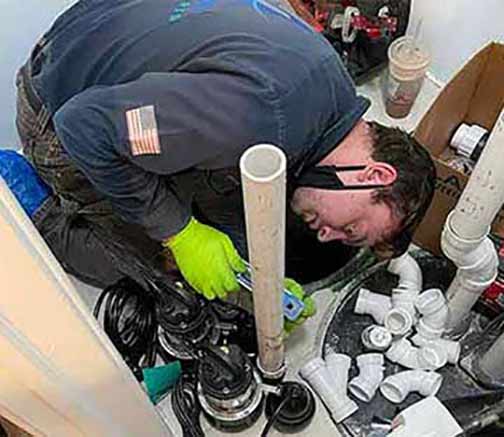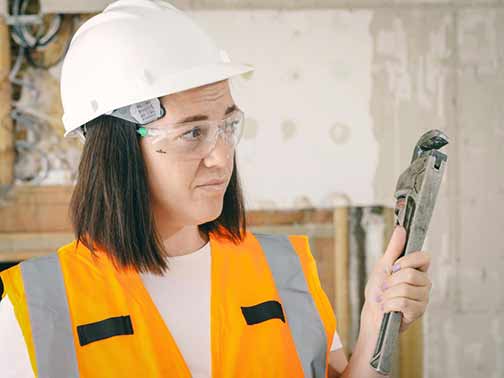
A sump pump is an essential tool for keeping your home safe from water damage. Positioned in the lowest part of your basement or crawlspace, this device automatically pumps out water that accumulates during heavy rains or flooding, thus preventing it from causing costly damage. This article provides unique tips that will help you maximize the efficiency and effectiveness of your sump pump. With this in mind, prepare to go deep into understanding the purpose of a sump pump.
The Silent Guardian: How a Sump Pump Works to Protect Your Home
A sump pump operates quietly in the background, vigilantly protecting your home from water-related damage. Typically installed in the lowest part of your basement, this device is designed to detect rising water levels automatically. Once detected, the sump pump activates, efficiently pumping excess water out and away from your home’s foundation. There are primarily two types of sump pumps: the submersible and the pedestal. The submersible type sits entirely underwater in the sump pit, making it quieter and more efficient, whereas the pedestal pump stands above the water, which makes it easier to service. Of course, ensuring that the float switch is functional is important, as it triggers the pump to start when water reaches a predetermined level.

Key Benefits of Installing a Sump Pump
Installing a sump pump offers several substantial benefits that extend beyond simple water removal. First and foremost, it is pivotal in preventing flooding, which can cause extensive damage to the structure and interiors of your home. As an illustration, during heavy rainfall or rapid snowmelt, the sump pump efficiently moves water away from your basement, safeguarding it against potential inundation. In addition, this proactive water management helps keep the basement dry, significantly reducing the risk of mold and mildew growth, which are harmful to both your home’s structure and your health. Not to mention, a well-maintained sump pump can also lead to lower home insurance premiums and may increase your property’s market value due to the added protective measure. In order to achieve this, call professionals to fix this or any other plumbing problem your house has.

Best Practices for Sump Pump Placement
Selecting the optimal location for your sump pump installation is important for its effectiveness. The ideal spot is typically the lowest point in your basement or crawlspace, where water naturally collects. This ensures that the pump activates before water levels rise too high. Similarly, considering factors like proximity to a power source and ensuring enough space for proper maintenance are key considerations. If you are short on space, you might want to consider temporarily renting a storage unit to make space for a sump pump. Here is where professional storage services like those offered by Beltway Movers can be a significant asset. They specialize in safely packing and transporting your belongings. This way, you can rest assured that your stuff will be safely stored during the sump pump placement.

Keeping Your Sump Pump Running Smoothly
Effective maintenance is key to ensuring your sump pump operates efficiently year-round. Establishing a routine cleaning and testing schedule is essential. Hence, homeowners should check and clear their sump pumps of debris, such as dirt and stones, which can clog the system at least once every few months. It is also important to inspect components like the check valve and float switch for wear and tear and replace them as necessary to prevent failures during critical times. Also, installing a backup battery powered pump or water-powered backup system, ensures that the pump operates uninterrupted during power outages, providing continuous protection against flooding.
More Than Just Water Removal
The role of a sump pump extends far beyond merely removing excess water from your home. It is a foundational component in maintaining the structural integrity of your property. Besides being essential in preventing basement flooding, a sump pump also mitigates the risks associated with water damage, such as weakened foundations and the proliferation of hazardous mold. With this in mind, the sump pump stands as a guardian of your home’s health, actively preserving its condition against the potential ravages of moisture. Recognizing the purpose of a sump pump to your home’s well-being can significantly enhance your appreciation of its value and importance in your overall home maintenance strategy.
Troubleshooting Common Sump Pump Problems
Identifying and addressing issues with your sump pump promptly can prevent major water damage. Common signs of a malfunction include unusual noises, continuous operation, or failure to activate during rainfall. These symptoms often suggest problems like a stuck switch, a clogged intake, or a faulty motor. Nevertheless, many of these issues can be resolved with simple fixes, such as cleaning the pump or adjusting the float. However, when more complex problems arise, it is essential to speak with a professional. Of course, understanding these common problems and knowing when to seek professional help extends the life of your sump pump.
Advanced Tips and Tricks: Enhancing Sump Pump Efficiency
Optimizing the efficiency of your sump pump involves more than routine maintenance. Consider installing additional features like water level alarms or a backup system to enhance its functionality and reliability. Similarly, evaluating whether to upgrade to a more powerful model or add auxiliary pumps can be beneficial, especially in areas prone to heavy rainfall or high water tables. In contrast, homeowners might also explore DIY solutions for minor enhancements, such as improving drainage around the pump pit to facilitate quicker water flow. Another key point is to assess the environmental conditions surrounding your home; factors like the typical rainfall patterns and soil type can influence your sump pump’s performance and necessitate specific adaptations.
Summary
Maintaining a sump pump is a crucial part of protecting your home from water damage and ensuring a safe, dry basement. Throughout this guide, we have explored various aspects of sump pump care, from installation and maintenance to troubleshooting and enhancements. Regular attention to your sump pump boosts its efficiency and prolongs its service life, safeguarding your home against the disruptive impacts of water intrusion. In short, proactive management of your sump pump equips you with a reliable defense against potential flooding. Hence, taking the time to understand the purpose of a sump pump and care for it is an investment in your home’s integrity and your own peace of mind.

